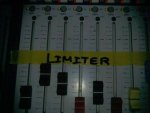Re: BEs and System DSP
In this case, desks were Yamaha and Behringer digital boards.
Input side of the processor is typically not touched, we just load the settings from Harman and go, Harman has people on staff that are way more experienced at system setup than me
Graphic eq is supplied either from the consoles or we supply Klark and/or DBX 31 band units.
I'm happy to see so many poll results, I've always thought that I fell closest to the second option - I'm always willing to adjust passband gains and even bump up the limiter threshold on the subs a few dB if I feel it is safe to do so. This is the first time I've let an band engineer have full reign over DSP setup, and based on my experience and the poll results it will likely be the last.
I would think this comes from the expectation of a graphic eq on the mains. Starting with everything flat may not be a bad policy. I would not expect that to include the speaker processor settings, which should be the manufacturer's specified parameters. I try to avoid using the processor for show system eq. That should be an external eq next to the console, or an eq built into the console. I prefer the ones in the console because there is already one there on every output.
Mac
In this case, desks were Yamaha and Behringer digital boards.
Input side of the processor is typically not touched, we just load the settings from Harman and go, Harman has people on staff that are way more experienced at system setup than me
Graphic eq is supplied either from the consoles or we supply Klark and/or DBX 31 band units.
I'm happy to see so many poll results, I've always thought that I fell closest to the second option - I'm always willing to adjust passband gains and even bump up the limiter threshold on the subs a few dB if I feel it is safe to do so. This is the first time I've let an band engineer have full reign over DSP setup, and based on my experience and the poll results it will likely be the last.
Last edited:

